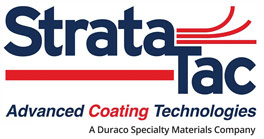Custom Adhesive Patterns
Comments Off on Custom Adhesive PatternsStrata-Tac’s capabilities allow us to create custom patterns with dry lanes. These dry lanes can serve many different purposes depending on the application, such as creating lift-edges for easy removal or reducing adhesive build-up when die cutting.
In order to ensure product accuracy, custom patterns will require a Pattern Adhesive Design Form to be filled out. The Strata-Tac technical team will review and either approve or make recommendations based on their years of experience pattern coating. After a pattern is approved, the pattern is drawn in a CAD software, rechecked for accuracy, and then CNC machined for extreme precision. The pattern blade itself is then measured to confirm it is in spec. Once we have your pattern, we will keep it for use on your future orders.
Each custom pattern job is just that, custom. Because each construction is unique, Strata-Tac’s technical team may have different recommendations depending on the pattern and construction. Our team will collaborate with you to make application-driven products.
Pattern Design Tips:
- Coating the pattern on a film substrate will produce cleaner dry lanes. The film can be either the release liner or the face stock, but we recommend using film for at least one side of the construction.
- Symmetrical patterns tend to be easier to convert than asymmetrical rolls.
- For patterns with dry zones wider than 1”, perforations may be required to mitigate air buildup in dry lanes.
- Pattern tolerance is 1/16”. The limiting factor here is usually in keeping the slitter in register with the pattern. The pattern of adhesive and non-adhesive zones itself typically does not vary at all but the slitting tolerance is ±1/16”
- We use an additive that glows under a black light in the adhesive to guide our slitting process. This facilitates holding registration on the slitter to the pattern itself rather than guiding by the edge of the roll.


